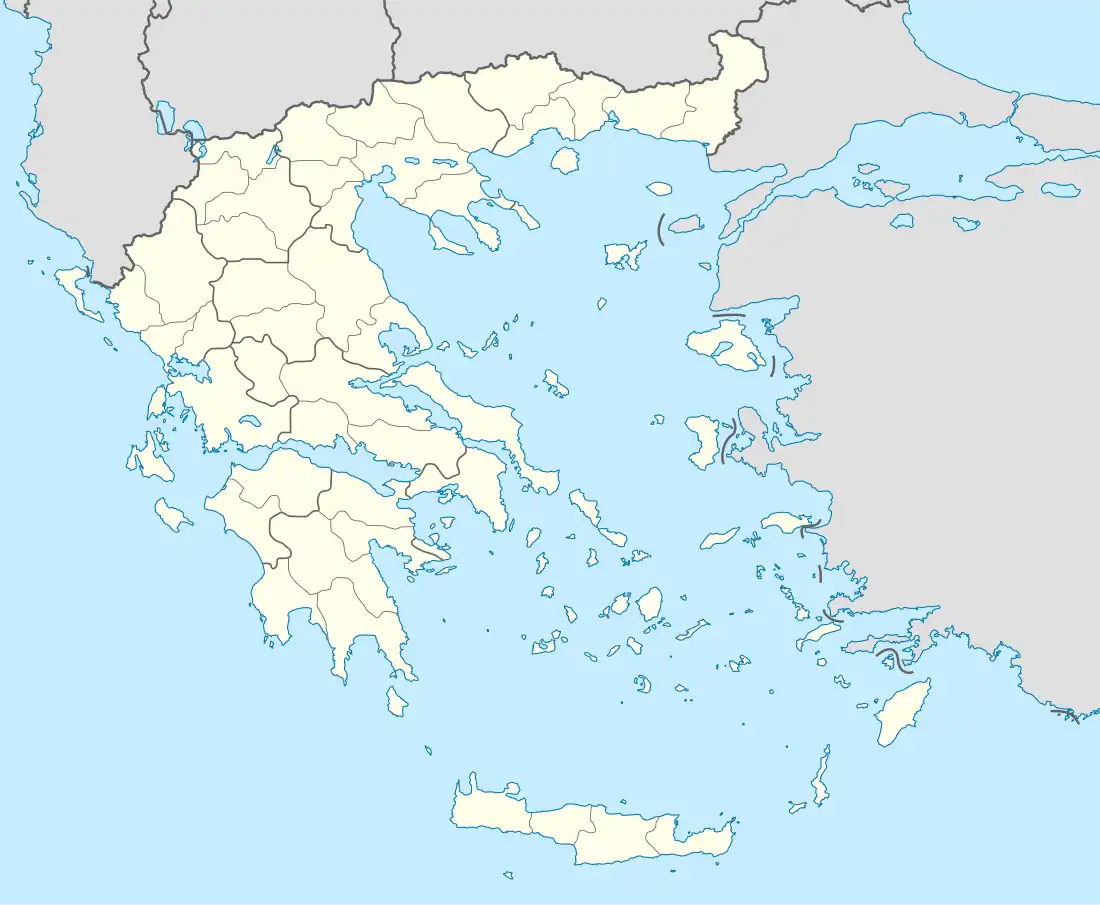Notia
Nótia (Greek: Νότια, formerly Νώτια; Megleno Romanian: Nânti or Nânta) is a village in the Exaplatanos municipal unit of the Pella regional unit, Macedonia, Greece. Lying at an altitude of 595 metres in the Upper Almopia Plain, it was for centuries the largest Megleno-Romanians village, and the only one with a regular market.
Nótia
Νότια Nânti, Nânta | |
|---|---|
 Nótia | |
| Coordinates: 41°06′11″N 22°12′36″E | |
| Country | Greece |
| Geographic region | |
| Administrative region | Central Macedonia |
| Regional unit | Pella |
| Municipality | Almopia |
| Municipal unit | Exaplatanos |
| Area | |
| • Total | 106.481 km2 (41.113 sq mi) |
| Elevation | 595 m (1,952 ft) |
| Population (2011)[1] | |
| • Total | 309 |
| • Density | 2.9/km2 (7.5/sq mi) |
| Time zone | UTC+2 (EET) |
| • Summer (DST) | UTC+3 (EEST) |
The majority of Notia's Megleno-Romanian population converted to Islam in the 17th or 18th century. With the 1923 population exchange between Greece and Turkey, the Muslim Megleno-Romanians of the village were deported to Eastern Thrace in Turkey. They were called by the Greeks as "Karadjovalis" and by the Turks (Turkish: Karacaovalılar) after the Turkish name of their home region. They nowadays call themselves as Nantinets.[2]
A mosque existed on the road that crosses the village, later destroyed.[3]
Notia had 412 inhabitants in 1981.[4] In fieldwork done by Riki Van Boeschoten in late 1993, Notia was populated by a Greek population descended from Anatolian Greek refugees who arrived during the Greek-Turkish population exchange, and Aromanians.[4] Pontic Greek was spoken in the village by people over 30 in public and private settings.[4] Children understood the language, but mostly did not use it.[4] The Aromanian language was spoken in the village by people over 30 in public and private settings.[4] Children understood the language, but mostly did not use it.[4]
References
- "Απογραφή Πληθυσμού - Κατοικιών 2011. ΜΟΝΙΜΟΣ Πληθυσμός" (in Greek). Hellenic Statistical Authority.
- Kahl, Thede (2006). "The Islamisation of the Meglen Vlachs (Megleno-Romanians): The Village of Nânti (Nótia) and the "Nântinets" in Present-Day Turkey". Nationalities Papers. 34 (1): 71–90. doi:10.1080/00905990500504871.
- Stavridopoulos, Ioannis (2015). Μνημεία του άλλου: η διαχείριση της οθωμανικής πολιτιστική κληρονομιάς της Μακεδονίας από το 1912 έως σήμερα [Monuments of the other: The management of the Ottoman cultural heritage of Macedonia from 1912 until present] (Ph.D.). University of Ioannina. p. 206. Retrieved 28 March 2022.
- Van Boeschoten, Riki (2001). "Usage des langues minoritaires dans les départements de Florina et d'Aridea (Macédoine)" [Use of minority languages in the departments of Florina and Aridea (Macedonia)]. Strates. 10. Table 1: Réfugiés grecs; Footnote 2: Le terme « réfugié » est utilisé ici pour désigner les Grecs d’Asie Mineure qui se sont établis en Grèce dans les années vingt après l’échange de population entre la Turquie et la Grèce (Traité de Lausanne, 1924). Table 4: Notia, 412; R, V, P2, V2; R = Refugiés, V = Valaques (Aroumains), P = dialecte pontique, V = valaque (aroumain)"